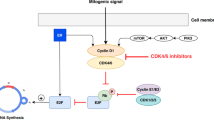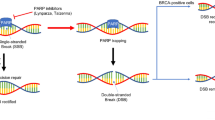Abstract
Background: The clinical outcome of gastric cancer patients has been improved by combination of 5-fluorouracil (5-FU) and paclitaxel (PXL). However, the optimal schedule of this combination has not been determined. Methods: The efficacies of sequential administrations of 5-FU and PXL on the gastric cancer cell line MKN45 were investigated using a WST-8 colorimetric assay. The cell cycle distribution of each drug was evaluated by flow-cytometry. Furthermore, the mechanism of antitumor activity enhancement by the administration sequence was investigated by western blotting. Results: MKN45 cell growth was significantly inhibited by each drug in a dose- and time-dependent manner. The cytotoxicities of PXL followed by 5-FU were significantly greater than those of 5-FU followed by PXL. The flow-cytometric analysis revealed that PXL exposure caused viable cell accumulation in G2/M phase in a dose-dependent manner. Western blotting showed that PXL exposure followed by 5-FU up-regulated Chk1 and Wee1 protein expressions until PXL removal and 5-FU exposure, when these expressions gradually decreased to their basal levels. 14-3-3σ protein expression was significantly up-regulated upon PXL treatment followed by 5-FU. Interestingly, Mad2 protein expression with PXL treatment followed by 5-FU gradually increased after the PXL removal and 5-FU exposure. Conclusions: PXL followed by 5-FU administration may be the optimal sequence for treatment of gastric cancer. The enhanced viable cell accumulation after PXL pretreatment may be related to G2 arrest. After PXL removal and 5-FU exposure, the cells progressing to M phase may undergo cell death by mitotic catastrophe due to DNA damage caused by 5-FU exposure.





Similar content being viewed by others
References
Ohtsu A, Shimada Y, Shirao K et al (2003) Randomized phase III trial of fluorouracil alone versus fluorouracil plus cisplatin versus uracil and tegafur plus mitomycin in patients with unresectable, advanced gastric cancer: The Japan Clinical Oncology Group Study (JCOG9205). J Clin Oncol 21:54–59
Vanhoefer U, Rougier P, Wilke H et al (2000) Final results of a randomized phase III trial of sequential high-dose methotrexate, fluorouracil, and doxorubicin versus etoposide, leucovorin, and fluorouracil versus infusional fluorouracil and cisplatin in advanced gastric cancer: a trial of the European Organization for Research and Treatment of Cancer Gastrointestinal Tract Cancer Cooperative Group. J Clin Oncol 18:2648–2657
Van Cutsem E (2004) The treatment of advanced gastric cancer: new findings on the activity of the taxanes. Oncologist 9:9–15
Kusunoki M, Yanagi H, Kotera H et al (1998) Effects of pharmacokinetic modulating chemotherapy using oral UFT and continuous venous 5FU infusion on the prognosis of irradiated rectal carcinomas with p53 overexpression. Int J Oncol 13:653–657
Kusunoki M, Yanagi H, Noda M et al (1999) The usefulness of pharmacokinetic modulating chemotherapy (UFT plus 5FU) in the treatment of unresectable colorectal carcinomas. Oncol Rep 6:547–552
Kusunoki M, Yanagi H, Noda M et al (2000) Results of pharmacokinetic modulating chemotherapy in combination with hepatic arterial 5-fluorouracil infusion and oral UFT after resection of hepatic colorectal metastases. Cancer 89:1228–1235
Tanaka K, Konishi N, Ohmori Y et al (2003) Modified pharmacokinetic modulating chemotherapy using 5-fluorouracil, UFT, and taxotere (docetaxel) for advanced gastric cancer. Int J Clin Oncol 8:381–385
Murad AM, Petroianu A, Guimaraes RC et al (1999) Phase II trial of the combination of paclitaxel and 5-fluorouracil in the treatment of advanced gastric cancer: a novel, safe, and effective regimen. Am J Clin Oncol 22:580–586
Kim YH, Shin SW, Kim BS et al (1999) Paclitaxel, 5-fluorouracil, and cisplatin combination chemotherapy for the treatment of advanced gastric carcinoma. Cancer 85:295–301
Kollmannsberger C, Quietzsch D, Haag C et al (2000) A phase II study of paclitaxel, weekly, 24-hour continuous infusion 5-fluorouracil, folinic acid and cisplatin in patients with advanced gastric cancer. Br J Cancer 83:458–462
Yokozaki H. (2000) Molecular characteristics of eight gastric cancer cell lines established in Japan. Pathol Int 50:767–777
Yoshikawa R, Kusunoki M, Yanagi H et al (2001) Dual antitumor effects of 5-fluorouracil on the cell cycle in colorectal carcinoma cells: a novel target mechanism concept for pharmacokinetic modulating chemotherapy. Cancer Res 61:1029–1037
Ohtsu A, Boku N, Tamura F et al (1998) An early phase II study of a 3-hour infusion of paclitaxel for advanced gastric cancer. Am J Clin Oncol 21:416–419
Yamada Y, Shirao K, Ohtsu A et al (2001) Phase II trial of paclitaxel by three-hour infusion for advanced gastric cancer with short premedication for prophylaxis against paclitaxel-associated hypersensitivity reactions. Ann Oncol 12:1133–1137
Yamaguchi K, Tada M, Horikoshi N et al (2002) Phase II study of paclitaxel with 3-h infusion in patients with advanced gastric cancer. Gastric Cancer 5:90–95
Johnson KR, Wang L, Miller MC III et al (1997) 5-Fluorouracil interferes with paclitaxel cytotoxicity against human solid tumor cells. Clin Cancer Res 3:1739–1745
Johnson KR, Young KK, Fan W (1999) Antagonistic interplay between antimitotic and G1-S arresting agents observed in experimental combination therapy. Clin Cancer Res 5:2559–2565
Johnson KR, Fan W (2002) Reduced expression of p53 and p21WAF1/CIP1 sensitizes human breast cancer cells to paclitaxel and its combination with 5-fluorouracil. Anticancer Res 22:3197–3204
Grem JL, Nguyen D, Monahan BP et al (1999) Sequence-dependent antagonism between fluorouracil and paclitaxel in human breast cancer cells. Biochem Pharmacol 58:477–486
Kano Y, Akutsu M, Tsunoda S et al (1996) Schedule-dependent interaction between paclitaxel and 5-fluorouracil in human carcinoma cell lines in vitro. Br J Cancer 74:704–710
DiPaola RS (2002) To arrest or not to G(2)-M cell-cycle arrest: commentary re: Tyagi AK, Singh RP, Agorwal C, Chan DC, Agorwal R. Silibinin strongly synergizes human prostate carcinomaDU145 cells to doxorubicin-induced growth inhibition, G(2)-M arrest, and apoptosis. Clin Cancer Res 8:3311–3314
Lanzi C, Cassinelli G, Cucuru G et al (2001) Cell cycle checkpoint efficiency and cellular response to paclitaxel in prostate cancer cells. Prostate 48:254–264
Woods CM, Zhu J, McQueney PA et al (1995) Taxol-induced mitotic block triggers rapid onset of a p53-independent pathway. Mol Med 1:506–526
Horwitz SB (1992) Mechanism of action of Taxol. Trends Pharmacol Sci 13:134–136
Wang X, Jin DY, Wong HL et al (2003) MAD2-induced sensitization to vincristine is associated with mitotic arrest and Raf/Bcl-2 phosphorylation in nasopharyngeal carcinoma cells. Oncogene 22:109–116
Cheung HW, Jin DY, Ling MT et al (2005) Mitotic arrest deficient 2 expression induces chemosensitization to a DNA-damaging agent, cisplatin, in nasopharyngeal carcinoma cells. Cancer Res 65:1450–1458
Anand S, Penrhyn-Lowe S, Venkitaraman AR (2003) AURORA-A amplification overrides the mitotic spindle assembly checkpoint, inducing resistance to Taxol. Cancer Cell 3:51–62
Nitta M, Kobayashi O, Honda S et al (2004) Spindle checkpoint function is required for mitotic catastrophe induced by DNA-damaging agents. Oncogene 23:6548–6558
van Bree C, Savonije JH, Franken NA et al (2000) The effect of p53-function on the sensitivity to paclitaxel with or without hyperthermia in human colorectal carcinoma cells. Int J Oncol 16:739–744
Lowe SW, Ruley HE, Jacks T et al (1993) p53-dependent apoptosis modulates the cytotoxicity of anticancer agents. Cell 74:957–967
Lavarino C, Delia D, Di Palma S et al (1997) p53 in drug resistance in ovarian cancer. Lancet 349:1556
Debernardis D, Sire EG, De Feudis P et al (1997) p53 status does not affect sensitivity of human ovarian cancer cell lines to paclitaxel. Cancer Res 57:870–874
Author information
Authors and Affiliations
Corresponding author
Rights and permissions
About this article
Cite this article
Toiyama, Y., Tanaka, K., Konishi, N. et al. Administration sequence-dependent antitumor effects of paclitaxel and 5-fluorouracil in the human gastric cancer cell line MKN45. Cancer Chemother Pharmacol 57, 368–375 (2006). https://doi.org/10.1007/s00280-005-0057-9
Received:
Accepted:
Published:
Issue Date:
DOI: https://doi.org/10.1007/s00280-005-0057-9




